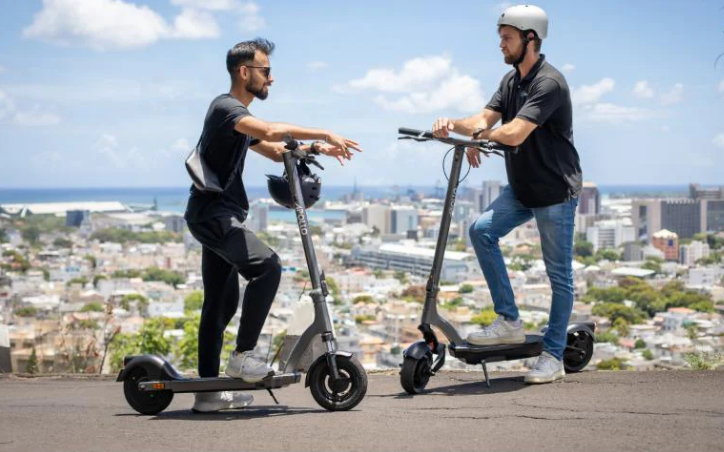1/10/2024
Amsterdam drives down the pedal: Citywide 30 km/h speed limit takes effect
“Brace for a shift in gears: Amsterdam's streets are about to get slower, sparking debate and anticipation over its impact on traffic flow, safety, and the overall atmosphere of the iconic Dutch city."
In an ambitious move to enhance road safety, Amsterdam has initiated a significant reduction in speed limits across the city. Starting December 8th, a uniform 30 km/h limit now applies to roughly 80% of Amsterdam's roads, with the new speed clearly indicated on traffic signs at every corner. This landmark decision aims to drastically reduce road casualties, improve traffic flow, and prioritize a safer environment for all road users, from cyclists and pedestrians to motorists themselves.
Global context: Following in the footsteps of major cities
Amsterdam joins a growing list of cities, including Brussels, Paris, Madrid and Edinburgh, in implementing reduced speed limits. Historical data from these cities indicates a 20–30% decrease in road casualties post-implementation, underscoring the effectiveness of such policies.
Understanding the new speed limit
The scope of change
The new speed limit applies to all vehicles on the roadway: scooters, electric bikes, buses, and taxis. Notably, trams, buses, taxis and emergency response vehicles will still be allowed to travel at 50 km/h on special lanes.
The rationale behind the decision
A community-driven initiative
Concerns about traffic safety were echoed among two-thirds of Amsterdammers, with the average of three serious accidents daily sounding a concerning alarm. The city council, led by Traffic Councilor Melanie van der Horst, listened.
Recognizing the need for action, van der Horst highlighted the critical safety factor at play: braking distances. "At 30 km/h, you can stop in half the distance compared to 50 km/h," she emphasized, a crucial consideration in Amsterdam's vibrant, densely packed streets and cycle paths.
Safety and survival rates
Collisions at 30 km/h offer a dramatic difference: a 95% chance of pedestrian survival compared to just 85% at 50 km/h. This slower speed allows drivers more time to process information and react to unexpected situations, contributing to a safer traffic environment.
Beyond accident reduction
Slower traffic naturally translates to quieter streets, significantly reducing noise pollution and creating a more pleasant urban atmosphere. Additionally, studies have shown that lower speeds encourage pedestrian and cycling activities, contributing to a healthier and more active population.

Implementation and adjustments
Amsterdam understands the need for a gradual shift in adapting to the new speed limit. To ease the transition, the city is implementing a comprehensive plan that includes:
Signage and road modifications
Amsterdam's journey to a citywide 30 km/h speed limit started months ago, with 4,500 new signs popping up over the months leading to December 2023. These new signs sprouted across the city, sporting informative stickers announcing the official December 8th rollout, thus ensuring a clear and well-timed transition. And now, as the stickers peel away, so too does the speed.
But Amsterdam didn’t stop at signage. To further solidify the slower pace, the city is adopting some clever infrastructure tweaks. On wider roads, expect to see central lanes emerge. This clever intervention visually narrows the space, instinctively prompting motorists to slow down. And to minimize confusion, the city is prioritizing removing unnecessary road lines, creating a cleaner and easier-to-navigate environment for all road users.
Maintaining traffic flow
Key to this approach is the preservation of certain arterial routes, the recalibration of traffic lights, and designated lanes where higher speed limits are maintained for specific vehicles.
Major roads such as Weesperstraat, Prins Hendrikkade, and Piet Heinkade will continue to operate with a 50 km/h speed limit. These roads will be distinctly marked to clearly indicate that they are exceptions to the widespread 30 km/h limit. In addition to these arterial roads, dedicated lanes for public transport means such as trams, buses and taxis will also retain the 50 km/h speed limit. Police, ambulance, and fire brigade vehicles will have unrestricted access to these faster lanes, ensuring that emergency response times are not impeded by the new speed limits.
Traffic lights throughout the city are also being recalibrated, and road features are being designed to encourage smoother traffic flow. These modifications aim to prevent the lower speed limit from significantly increasing travel times. The experience in Brussels, where a similar speed limit was introduced in 2021 without increasing travel time, serves as a reassuring example.
Enforcement and communication
Gradual enforcement
While the city acknowledges the need for a gradual approach to enforcement, it emphasizes that compliance will be monitored and fines will be issued for speeding. Residents are encouraged to report instances of speeding to aid in enforcement efforts.
Public awareness campaign
An extensive communication campaign will inform residents about the new speed limit and its implications. The campaign aims to embed the concept of '30 km/h as the new normal' in public consciousness.
Looking ahead: Evaluation and adaptation
While the initiative is progressive, it does face challenges. Key among these is ensuring consistent enforcement and public awareness. The city is committed to ongoing evaluation and adaptation of the strategy, learning from other cities, and sharing insights to further road safety globally. The city plans to evaluate the impact of the new speed limit after six months, adjusting strategies as necessary based on the outcomes.
UNAGI Subscription: The perfect fit for Amsterdam's new speed limits

As Amsterdam embraces a more sustainable and safe urban transport environment with its new 30 km/h speed limits, electric scooters emerge as an ideal solution for navigating this busy city. The UNAGI Model One scooter, in particular, aligns seamlessly with this new change. The UNAGI Model One boasts a top speed of 20 mph (32 km/h), just a touch above the city's speed limit. However, its paired app allows users to easily lower the speed to comply with local regulations. The scooter's 25-mile range, comfy ride, and portability make it perfect for combining with other forms of transport, suiting the dynamic lifestyle of Amsterdam's residents.
UNAGI offers flexible acquisition options: a budget-friendly subscription starting at $39 a month or the option to purchase outright, catering to different user preferences for this practical and eco-friendly mode of urban transport.


